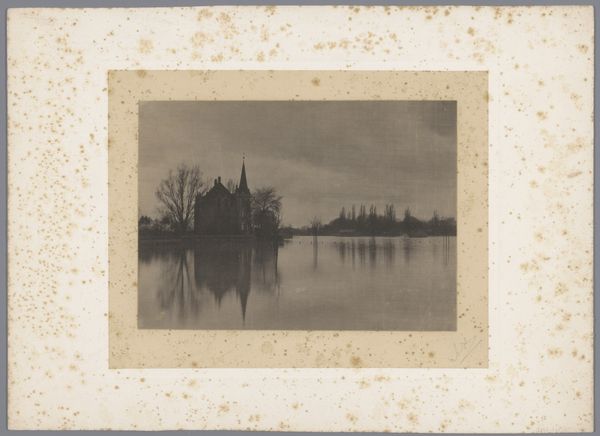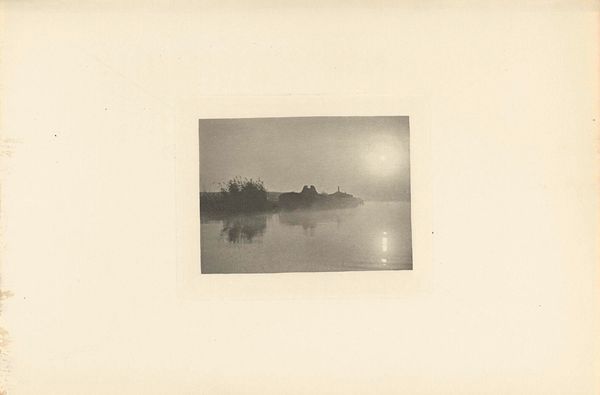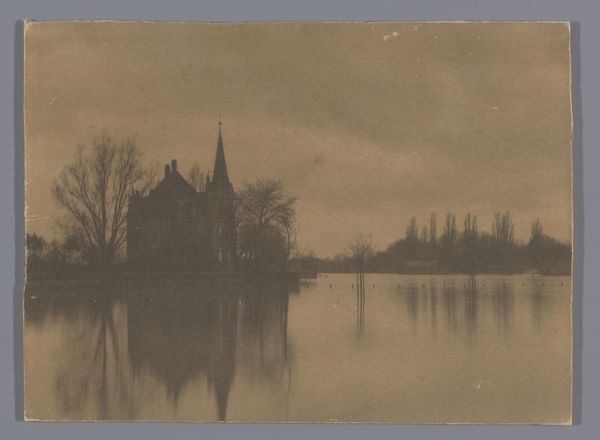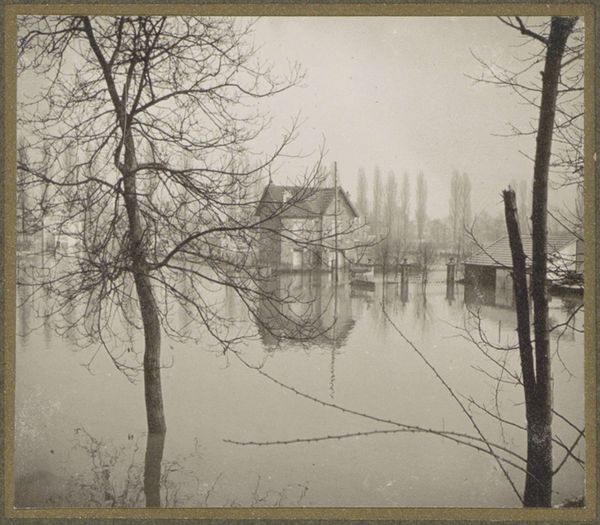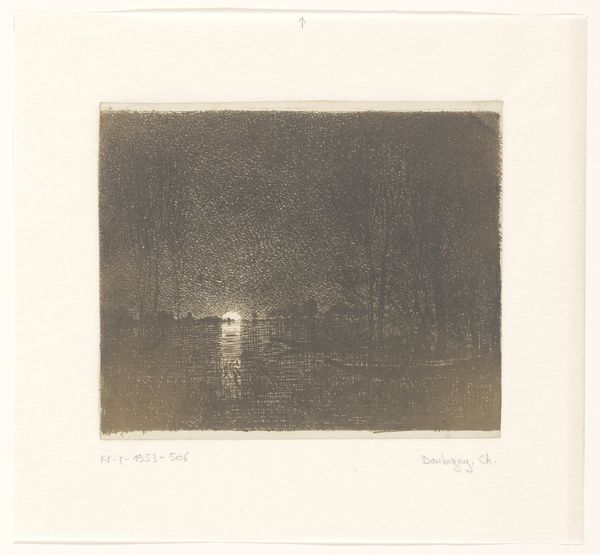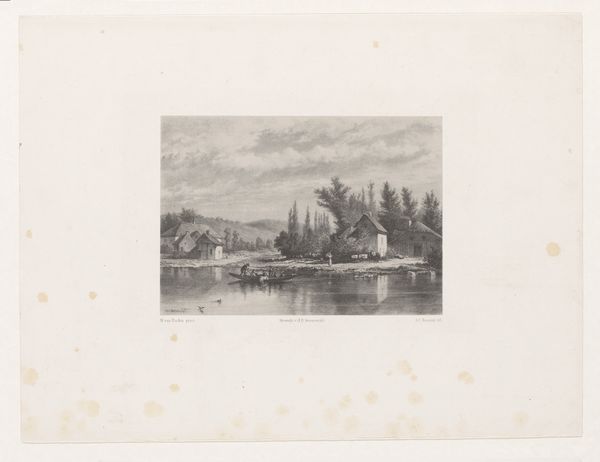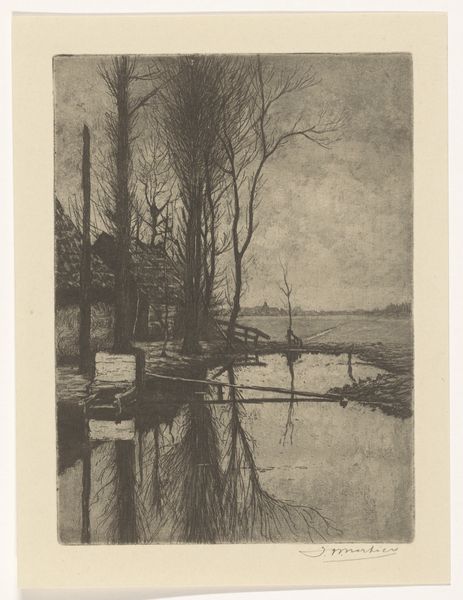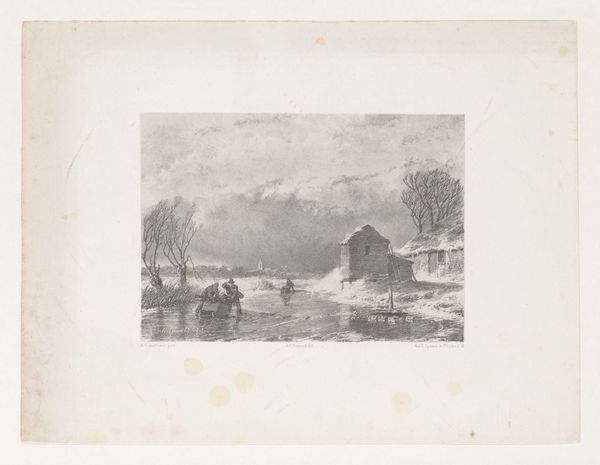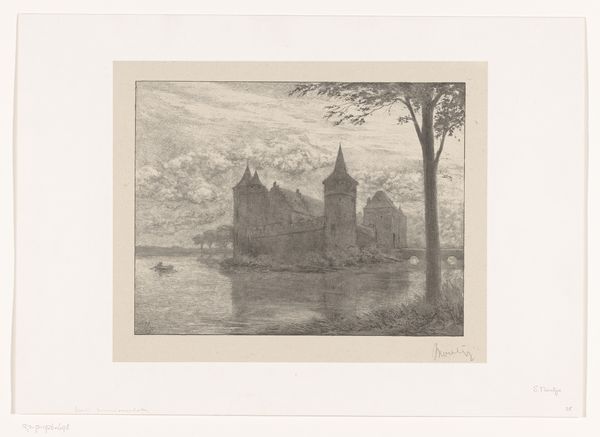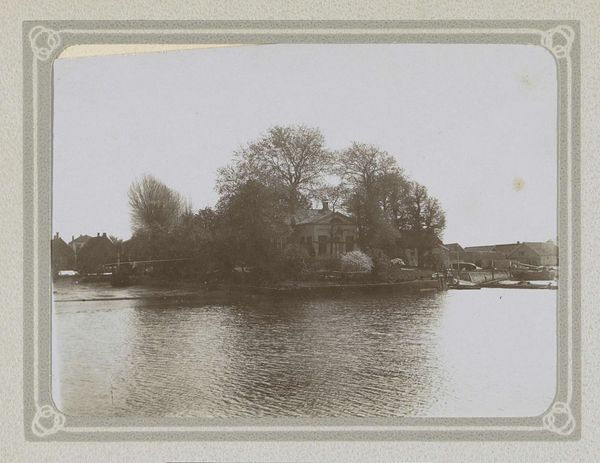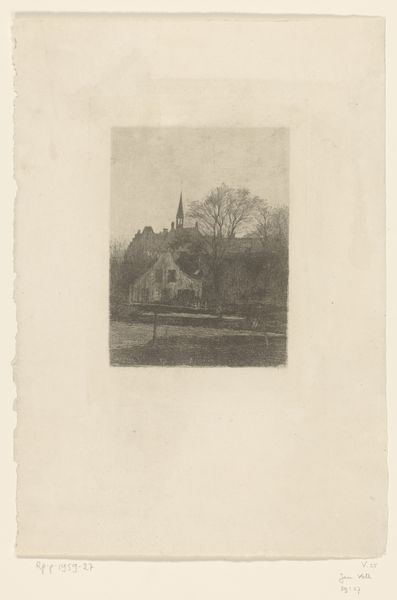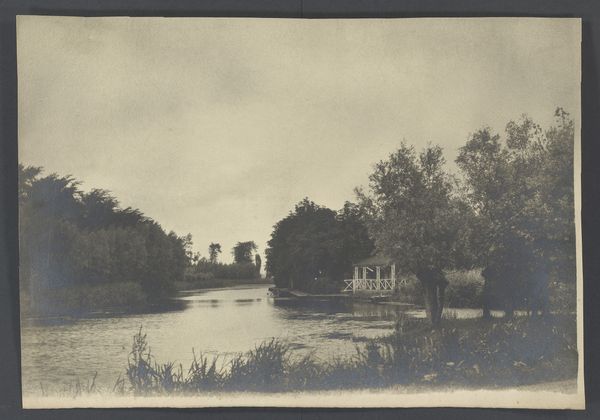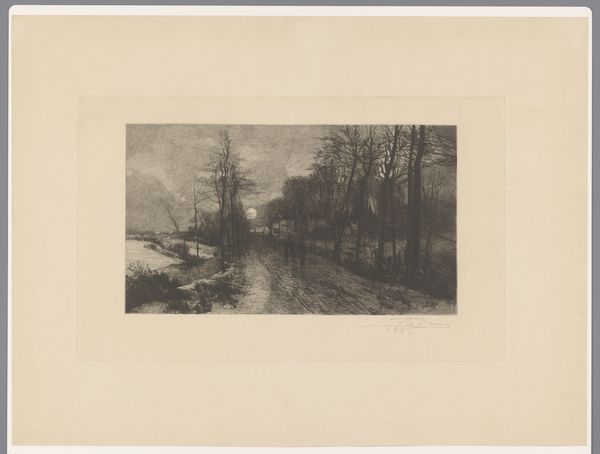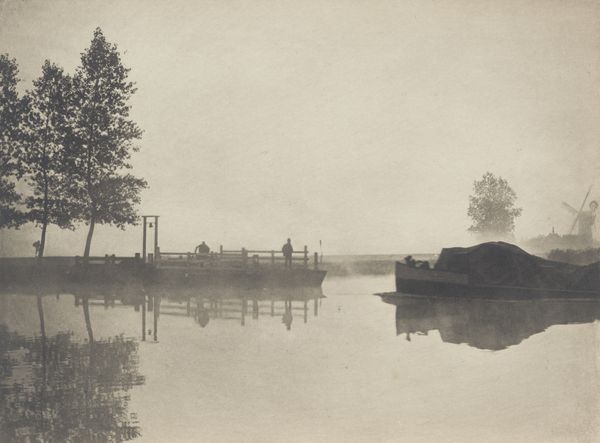
Dimensions: height 400 mm, width 465 mm
Copyright: Rijks Museum: Open Domain
Eugène Cicéri's 'View of Chillon Castle on Lake Geneva' presents a serene yet formidable fortress, its reflection shimmering in the still waters. Dominating the scene is the castle, a symbol of power and endurance, deeply rooted in European history as both a defensive structure and a political entity. The image of a castle reflected in water is a powerful one, recurring throughout art history—from medieval tapestries to Romantic paintings. Water, often representing the subconscious, mirrors the castle's imposing strength, suggesting a duality between conscious power and deeper, perhaps hidden, foundations. We find similar motifs in earlier heraldic emblems where castles signified dominion and lineage, and even in contemporary architectural photography which capture a sense of awe and timelessness. These symbols speak to our collective memory, evoking narratives of protection, control, and the enduring human quest for security and legacy. The castle stands as a testament to the cyclical nature of history, a recurring motif that embodies both the achievements and the burdens of civilization.
Comments
No comments
Be the first to comment and join the conversation on the ultimate creative platform.
